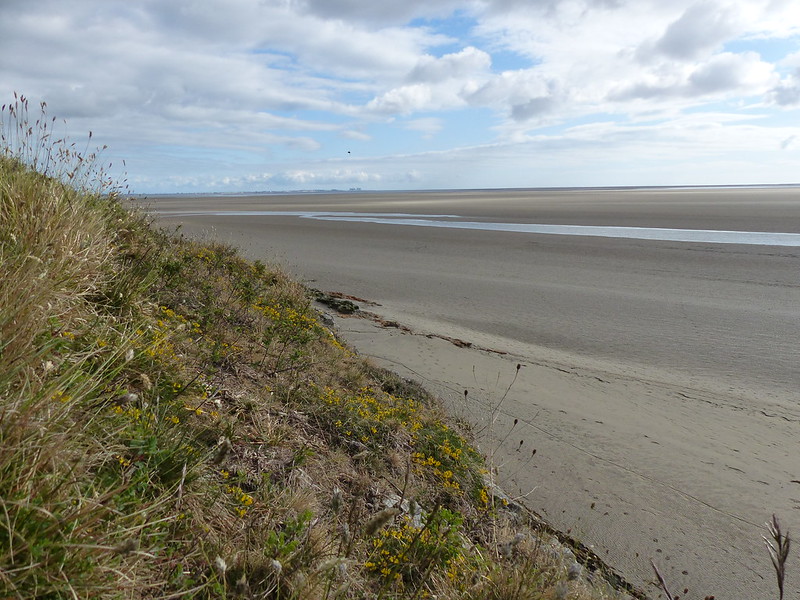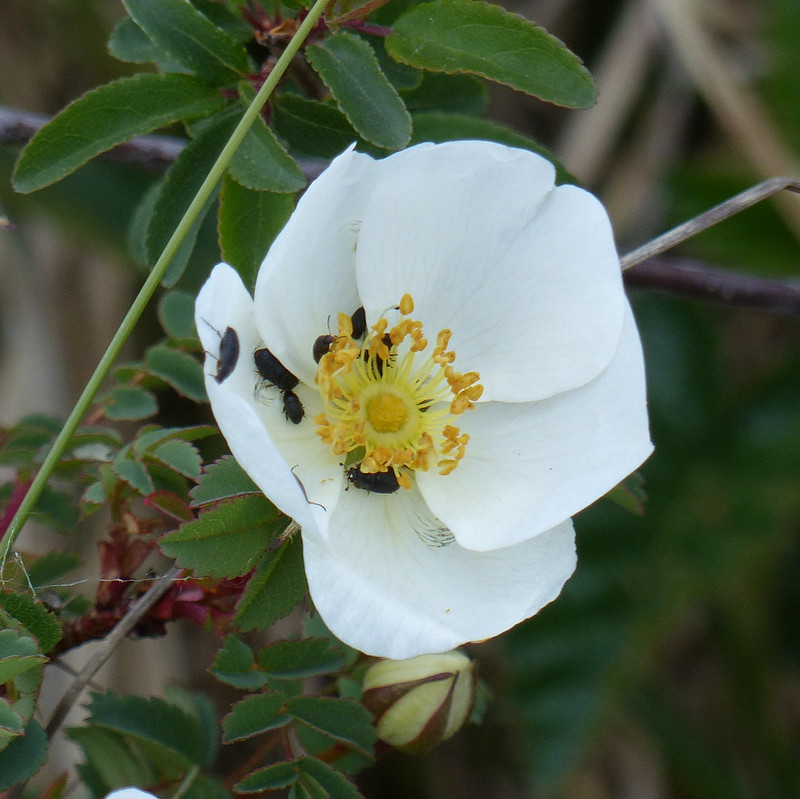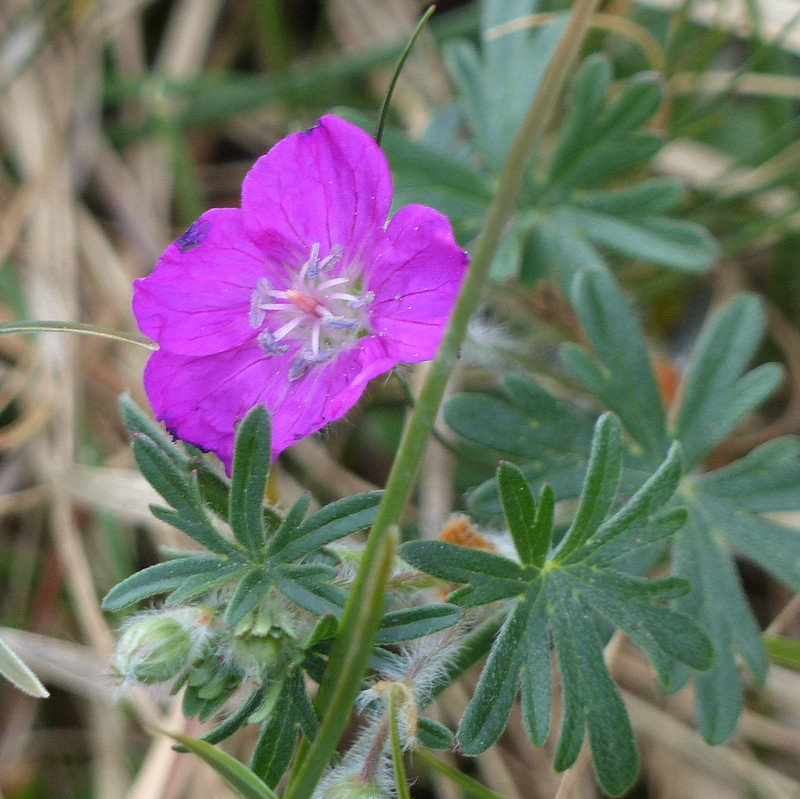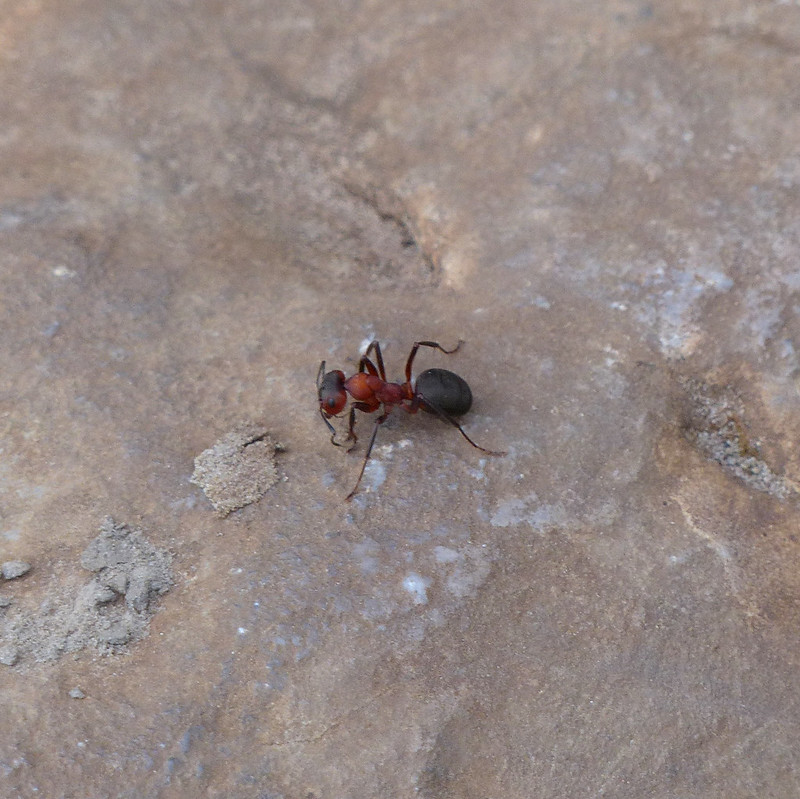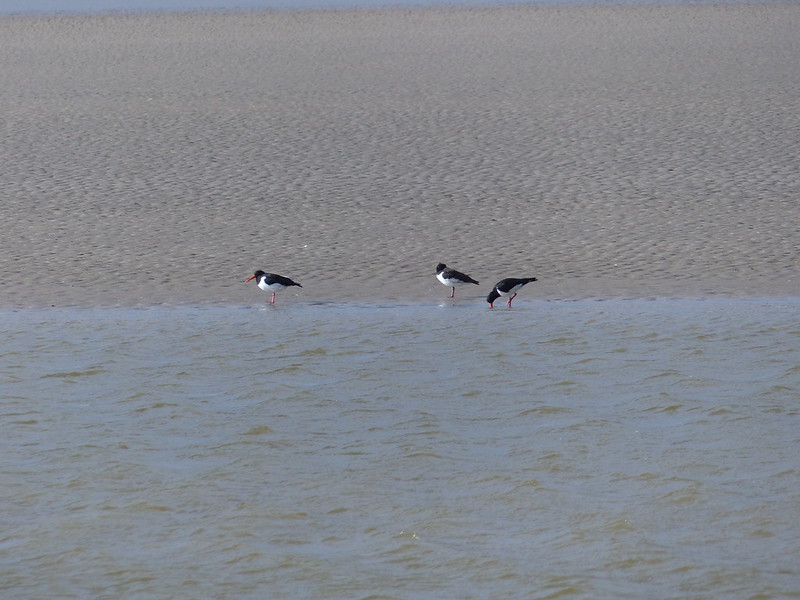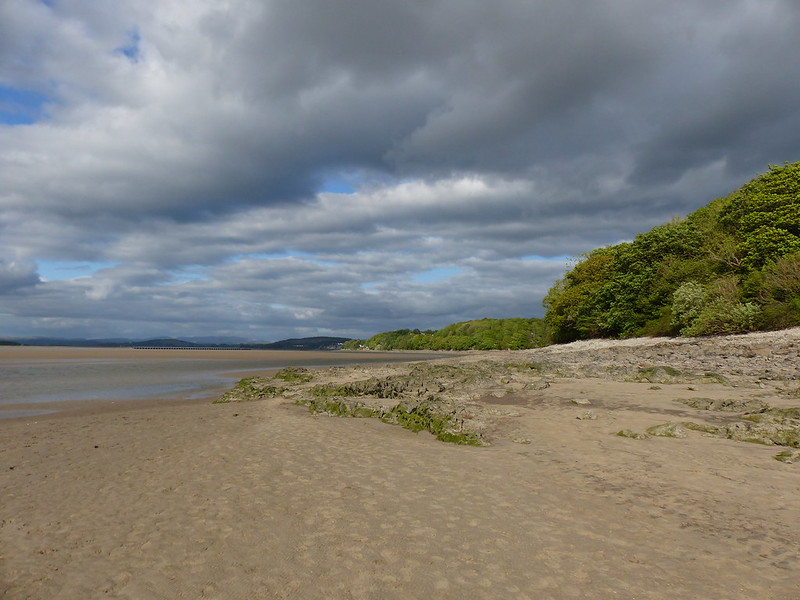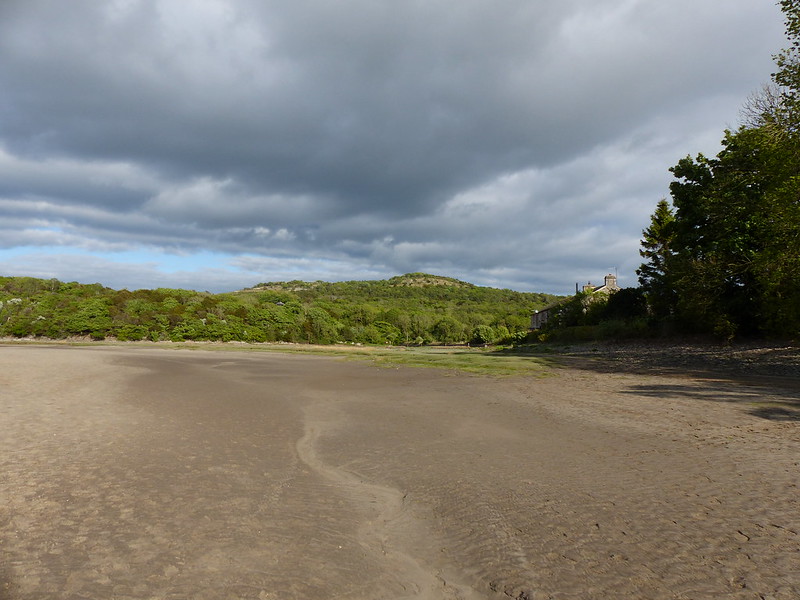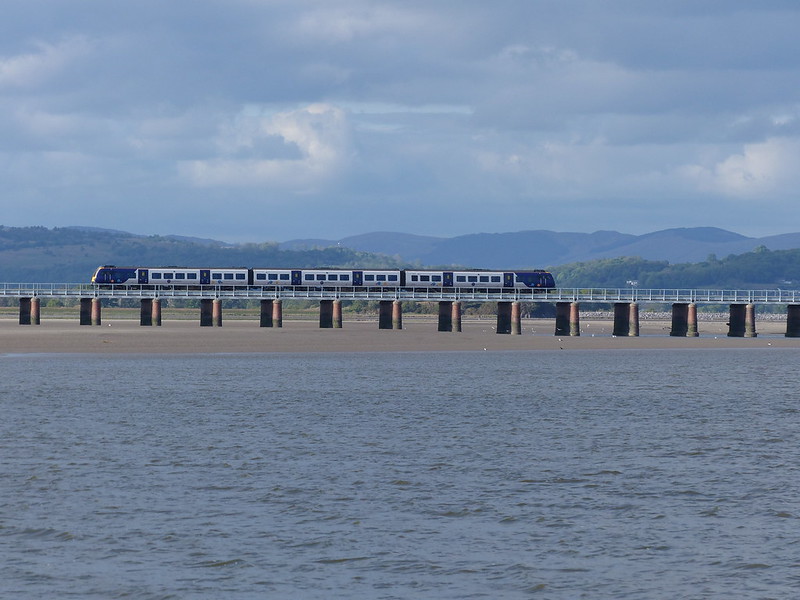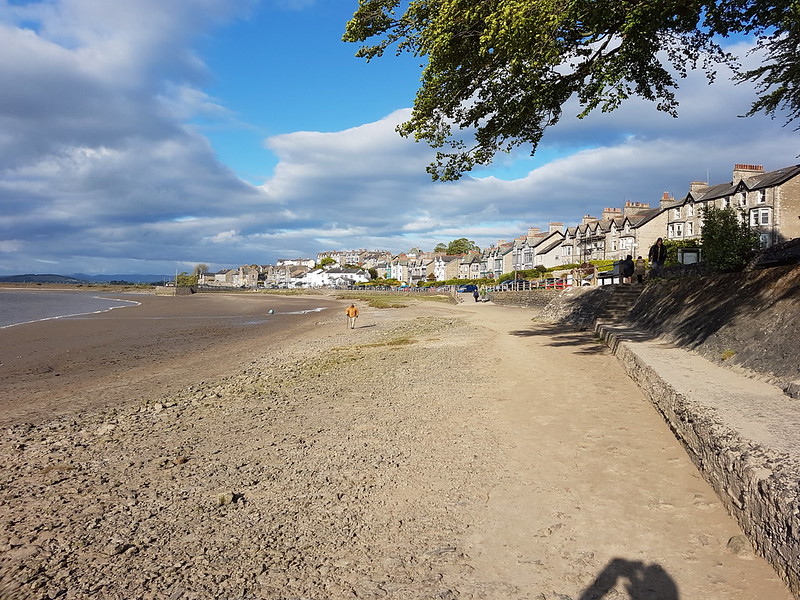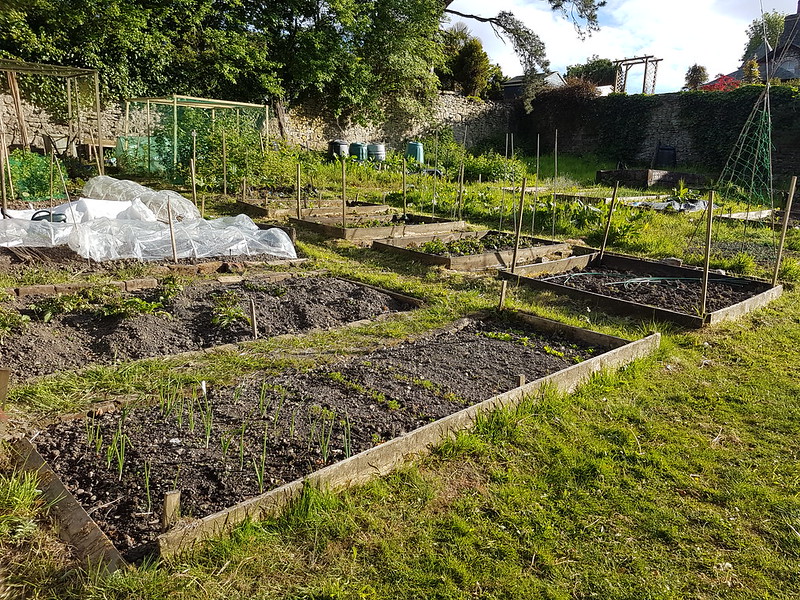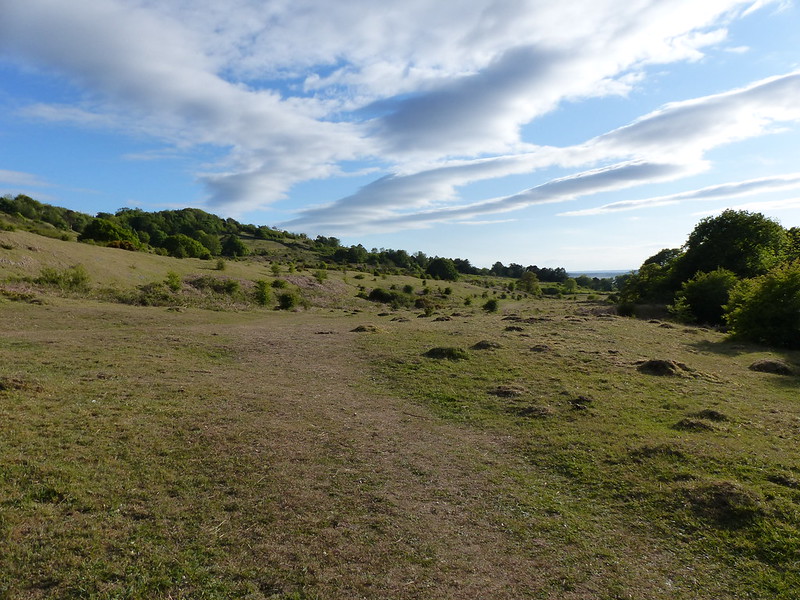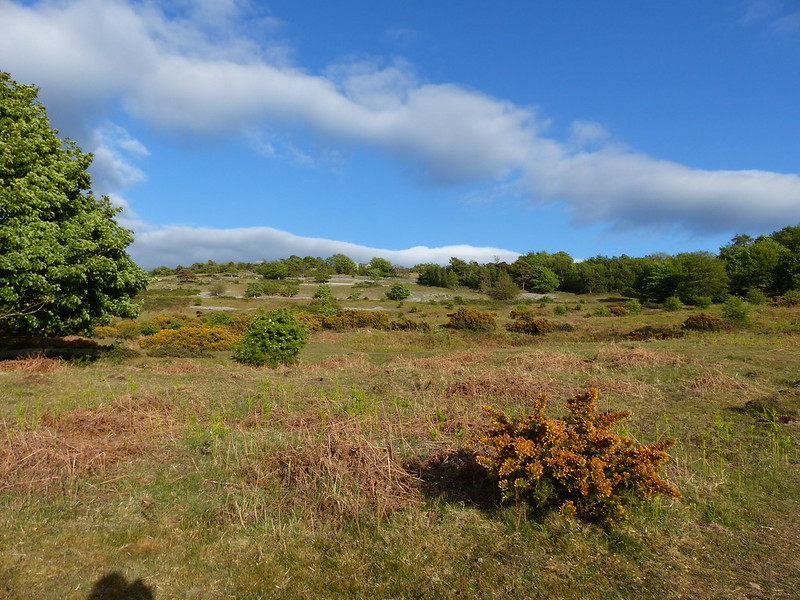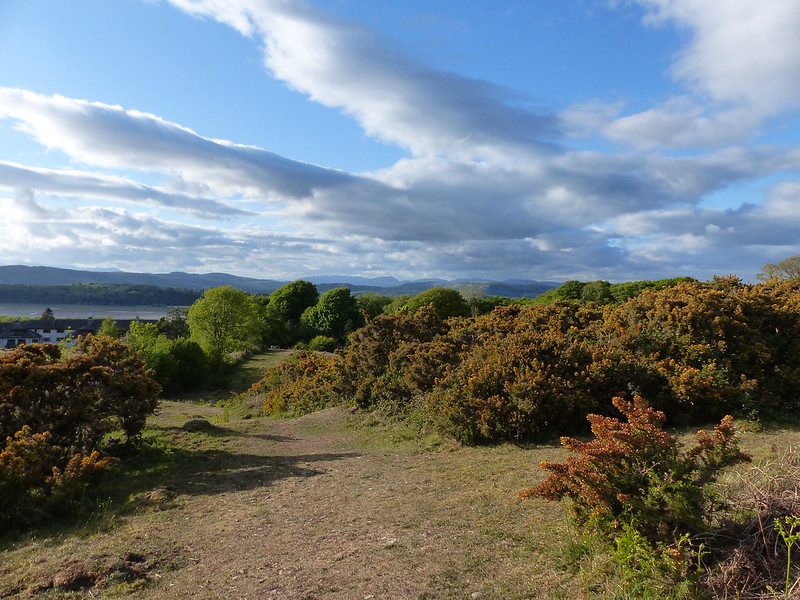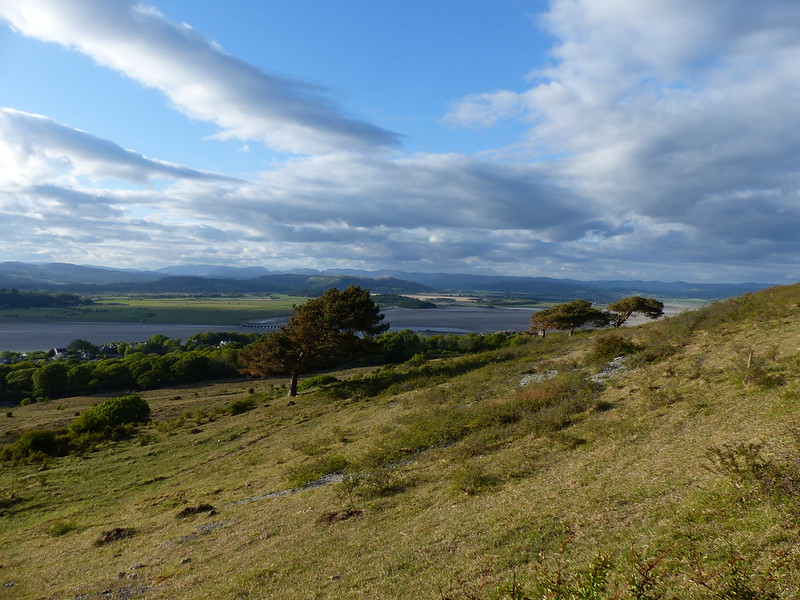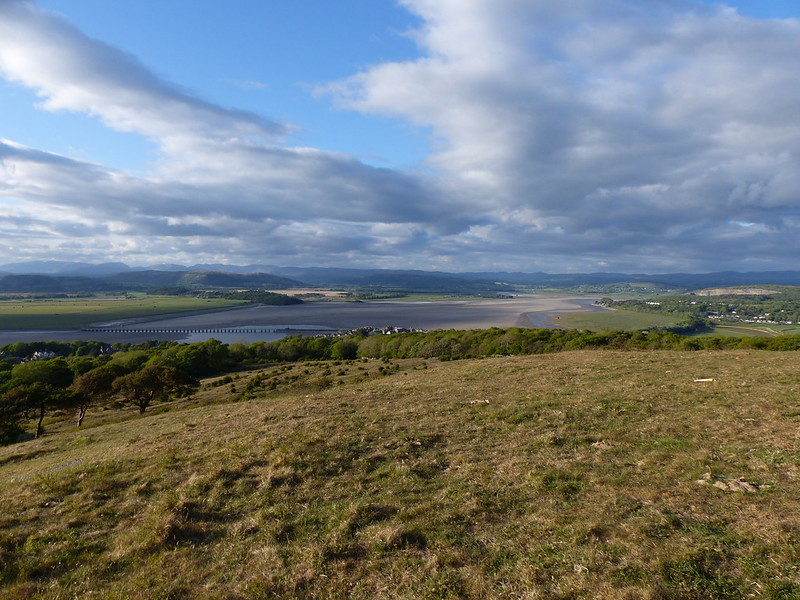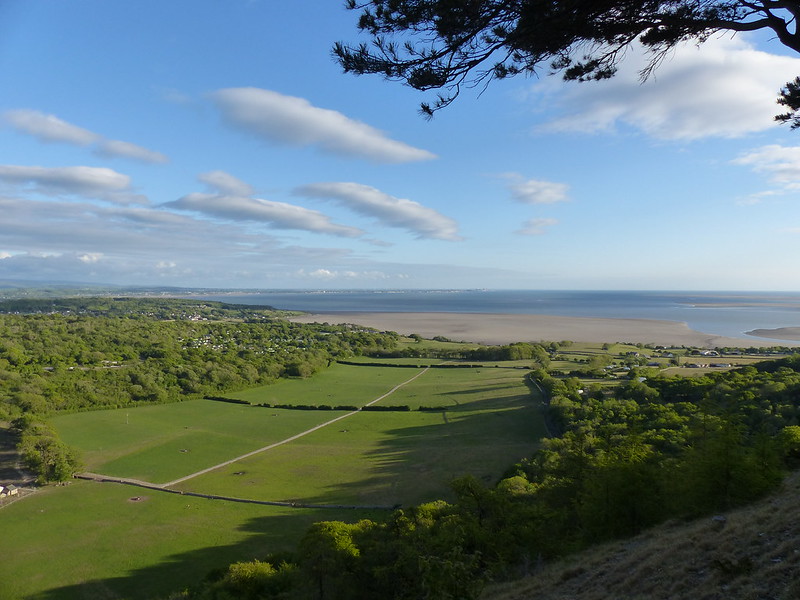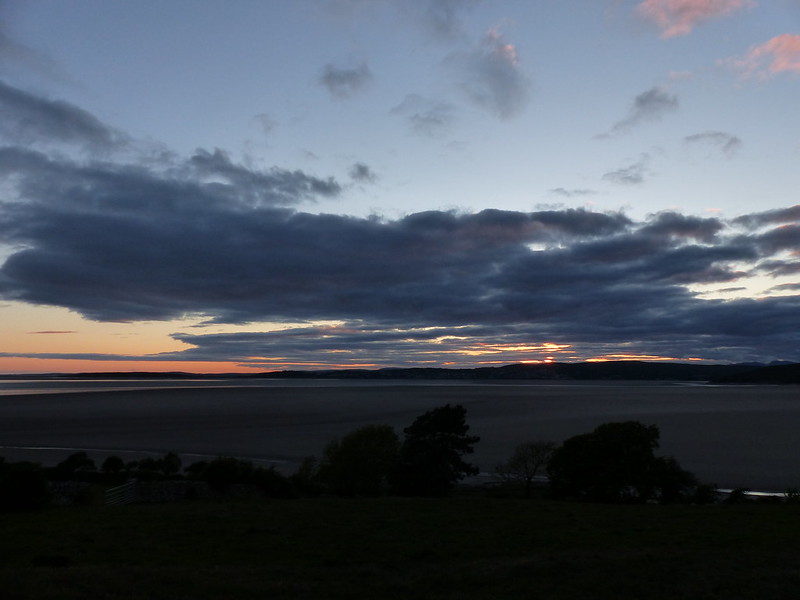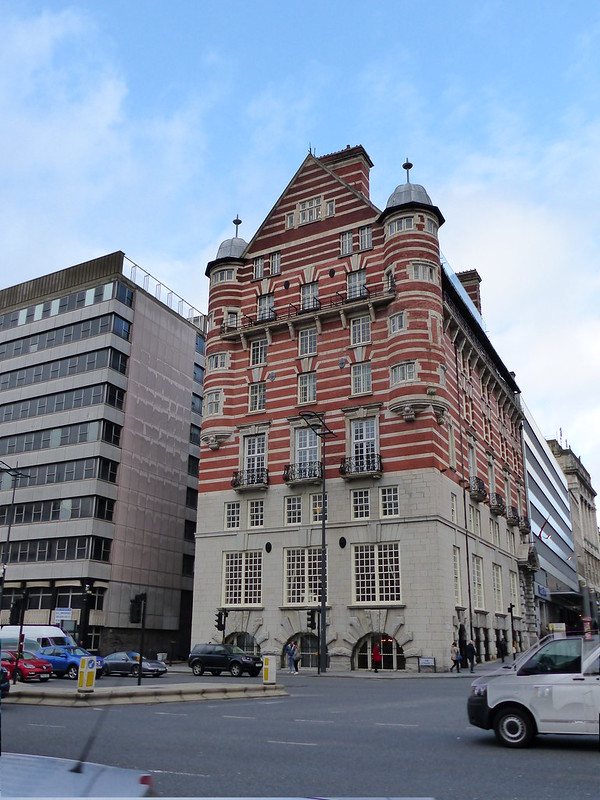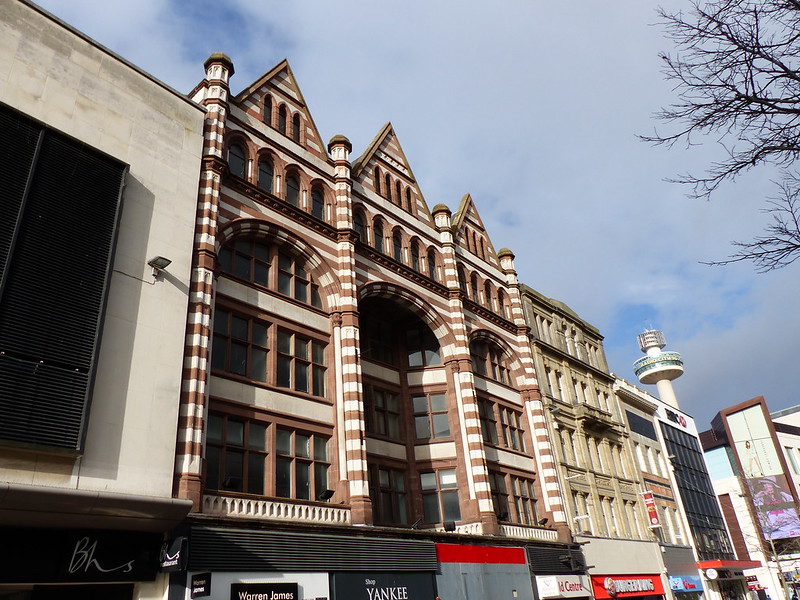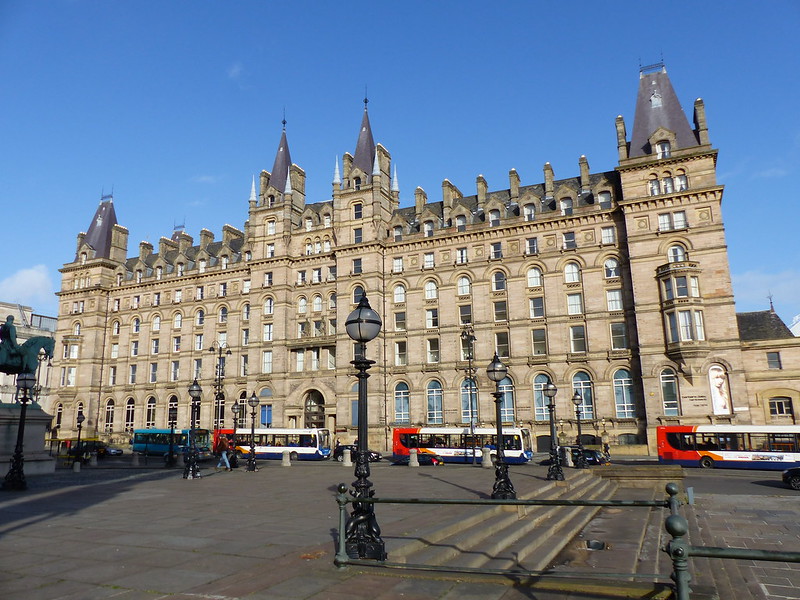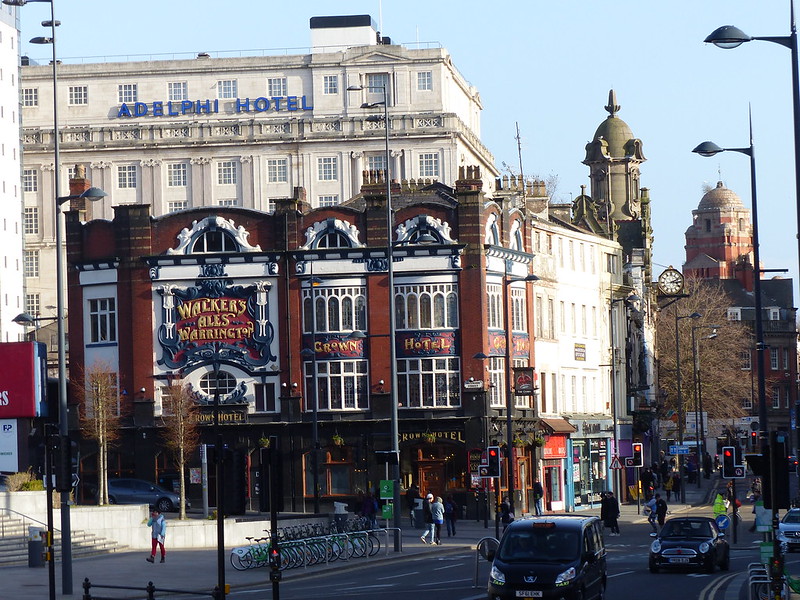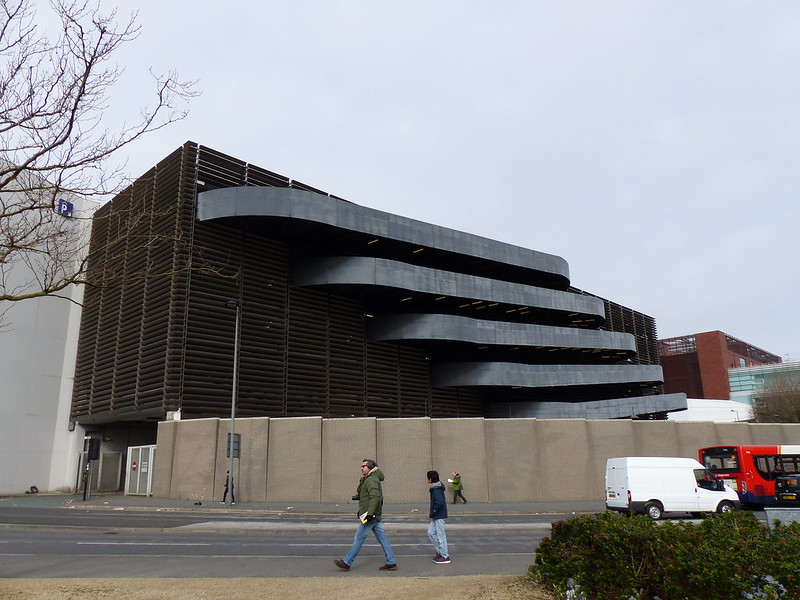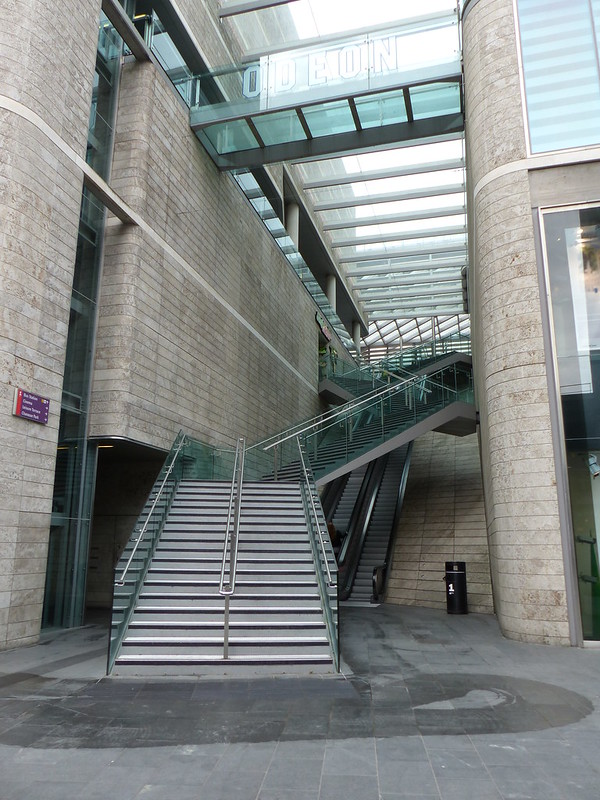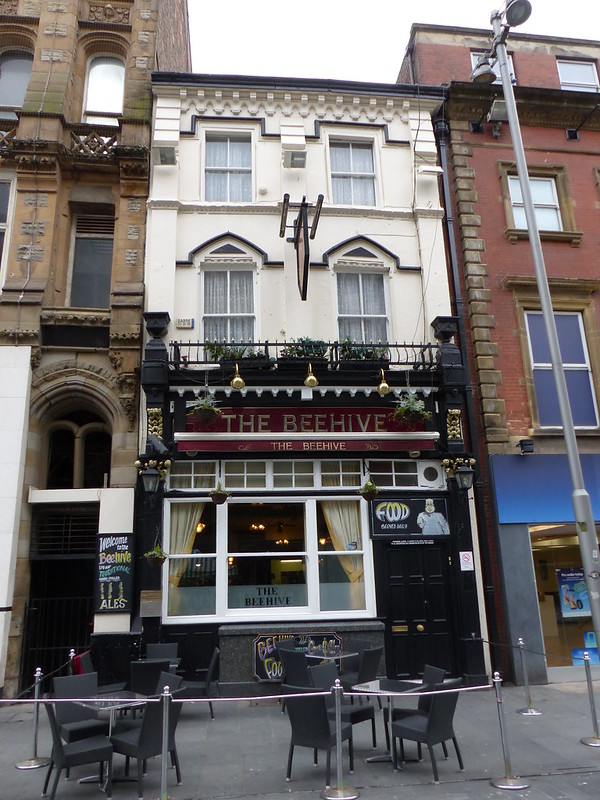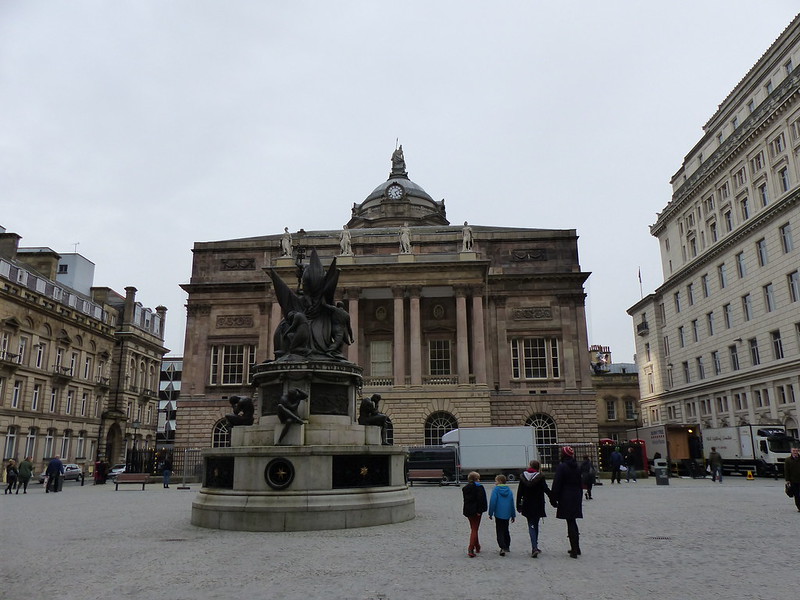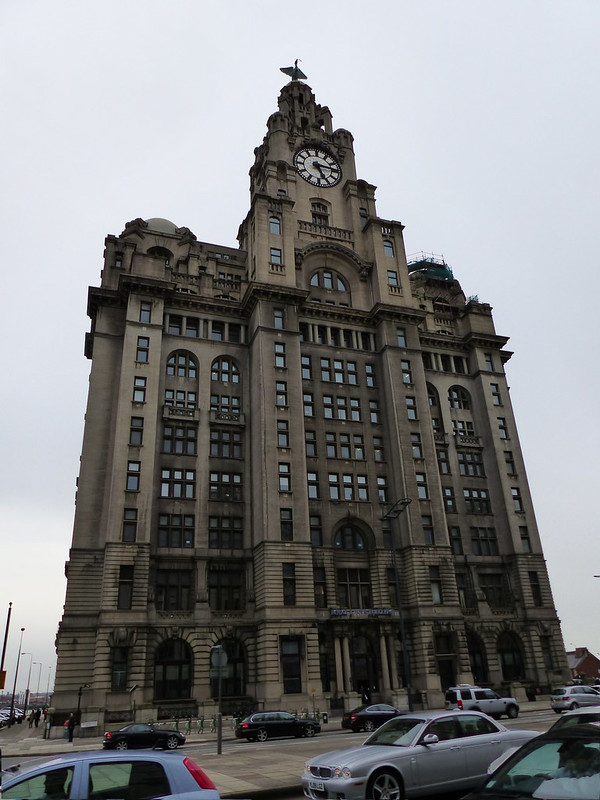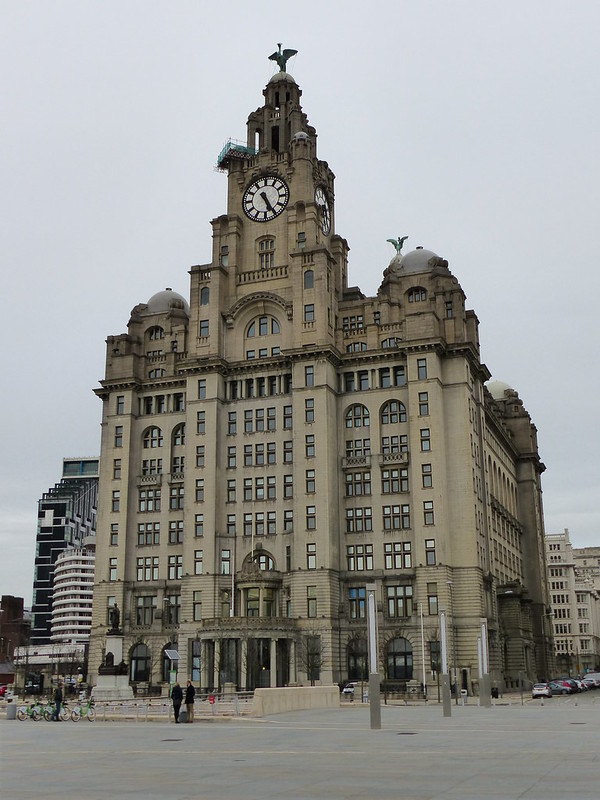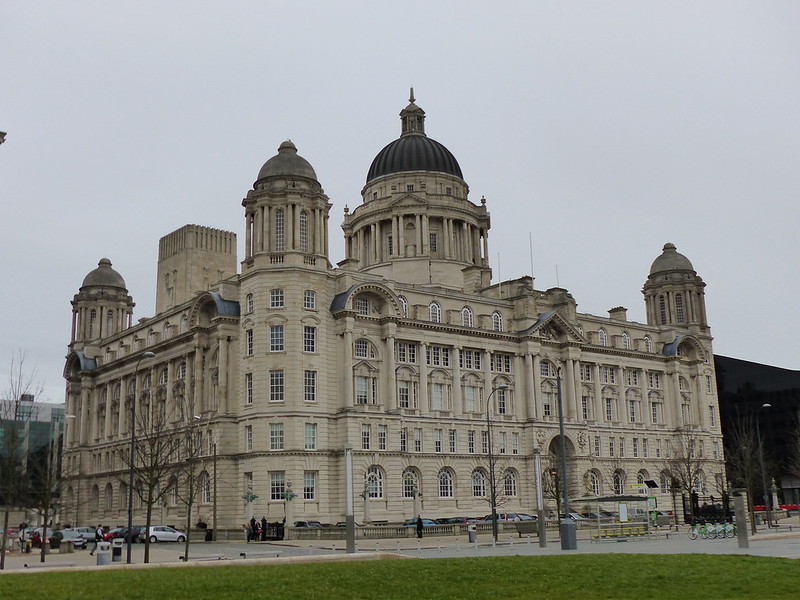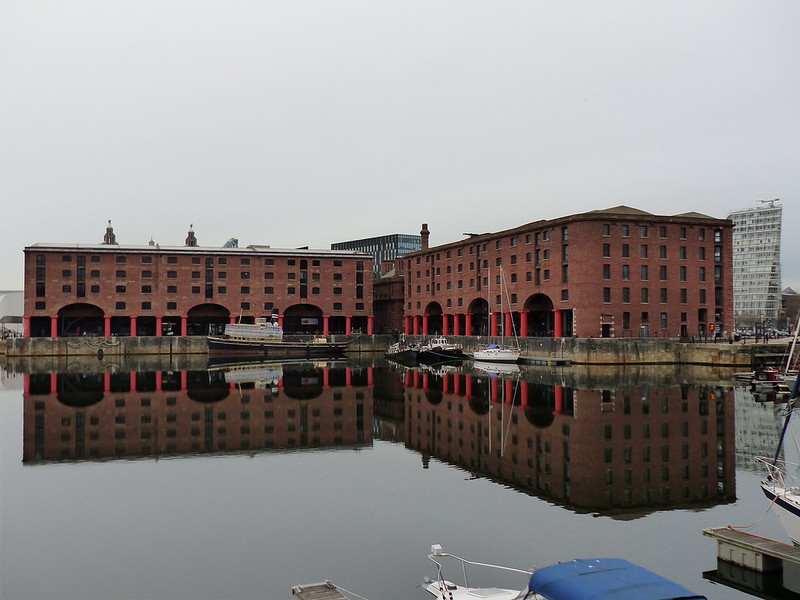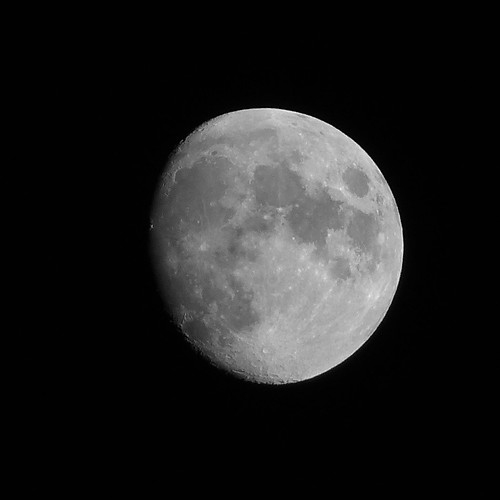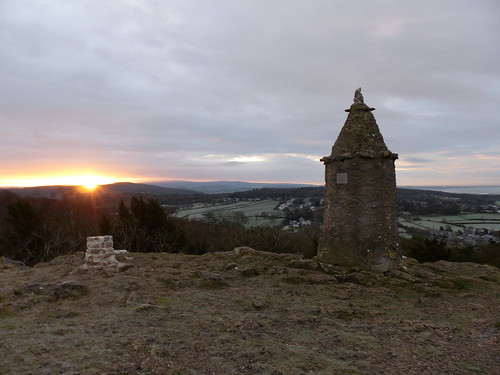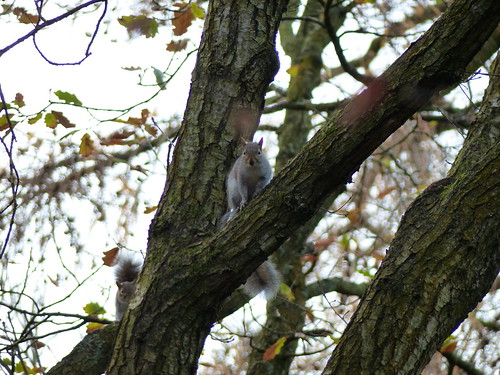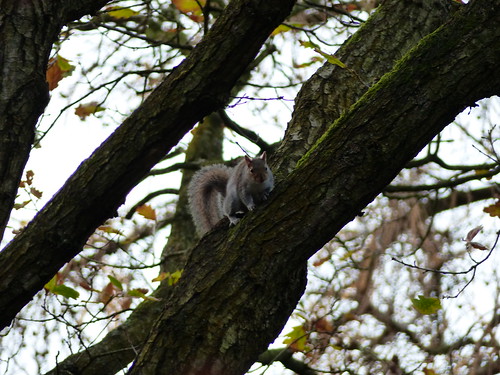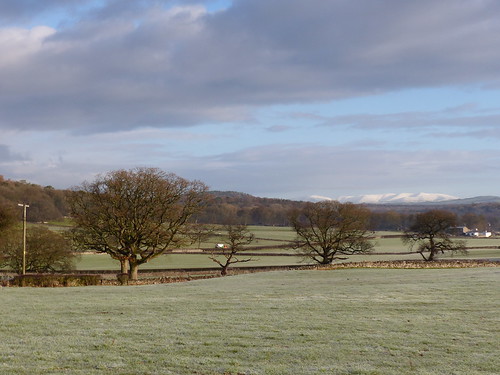Morecambe Bay, with lots of horseshoe vetch rather imperfectly captured in the foreground.
When I was at secondary school, in my mid-teens, I spent my lunchtimes playing cards, or football; listening to, or later, a sixth-form privilege, playing records in the music club, which is the only time I remember ever being in the school’s one and only lecture theatre; bunking off into town to borrow books or records from the library, or occasionally buying records; even more infrequently going to the pub with friends for a sneaky beer (way under-age and in uniform, how times have changed); but sometimes, quite frequently to be honest, I would slope off to the school’s library for a quiet half-hour. I’ve always been a bookworm. Back then, I liked to read New Scientist each week, and sometimes leaf through the English edition of Pravda, because it tickled me that the school bought it, and then I had an assortment of favourite books, which I would revisit. There was a dictionary of quotations of which I was very fond; I also remember reading about Russell’s paradox and the paradoxes of Zeno, which could have been in a maths text, but I suspect I more likely discovered them in an encyclopaedia; and there was a coffee-table style book of the photographs of Ansel Adams.
Burnet Rose.
All of which is my long-winded way of introducing the f/64 group and their dedication to pin-sharp photographs, with a huge depth of field, achieved using a very small aperture.
I’m going to guess that these are pollen beetles of some description, the smaller ones anyway.
I was already a photographer, of sorts, by then. My Grandad gave me an old Agfa camera of his own which he’d replaced. It was 35mm, not SLR, but it was necessary, for each photo, to set the aperture and exposure, for which purpose he also gave me a clunky light-meter which was almost as big as the camera. I don’t think I took any very startling photos, limited as I was by the cost of processing the films, but it did give me a great grounding in the mechanics of operating a camera.
Bloody crane’s-bill, I think.
When I finally did get an SLR camera, thanks to my parents largesse, it incorporated a light meter and was semi-automatic. And since the switch over to digital cameras, the couple that I’ve owned seem to have become increasingly autonomous and do everything but choose the subject which is to be photographed, and that’s surely only a matter of time.
Bell heather, I think.
I do switch off the full automatic mode when I’m using the telephoto for nature shots of small or distant things.
Wood ant. Small, but not all that small compared to other British ant species.
And I’ve recently remembered that the camera has a ‘landscape’ setting and started using that again, but I need to remind myself how that’s set up. The camera generally defaults to f2.8 because the wide aperture lets plenty of light in which means the huge zoom works better than on many equivalent cameras, but that also decreases the depth of field, which is not ideal for landscape pictures
I’ve also remembered that what captivated me in Ansel Adams black and white photographs, all those years ago, was the sharp detail in the foreground, the distant mountains and even in the clouds. I’ve been trying to remember to include some foreground in the pictures, maybe by kneeling or lying down or by finding something striking to frame in the foreground.
This picture, for example, of Grange and Hampsfell, could really do with a bit more interest in the foreground. To be fair, the reason I took it was to show the channel, which was no longer right under the cliffs and which seems to be connected to the River Kent, which is how the OS map shows it.
These two, with a bit thrift for colour, are what I was thinking of, although how successful they are I’m not sure.
It kept me entertained, thinking about it, anyway.
Oystercatchers.
The f/64 photographers were based in California and had all of the advantages that offers in terms of scenery and particularly in terms of light. Even in the good spell of weather we’ve had, you can’t always guarantee decent light in the North-Wet of England.
The pictures, long-suffering readers will almost certainly recognise, were taken on a walk around the coast to Arnside, which was followed with a return over the Knott, creature of habit that I am.
New Barns and Arnside Knott.
Close to Arnside, where there’s a small public garden abutting the estuary, there was a real hullabaloo in the tall pines growing in the garden. The noise was emanating from a conspiracy of ravens, some of which were in the trees and some of which were circling above, clearly agitated. This single individual was holding itself aloof from the fuss, coolly going about its business.
It eventually flew up on to the wall and then proceeded to hop and prance about there, looking, I thought, very pleased with itself, like a mischievous and slightly disreputable uncle enjoying a fag outside, whilst the family party audibly descends into a squabble within.
Train crossing the Kent viaduct.
Arnside.
From the end of the promenade, I climbed up through the old Ashmeadow estate where there a small area of allotments. There something very comforting about a well tended allotment, I always think, not that I’d ever have the patience to keep one neat and tidy myself.
From there I was up onto Redhill Pasture, where, any day now, I should be able to assist with the wildflower monitoring project again; we’ve just had the go ahead from our local National Trust officer.
Redhill Pasture.
Lakeland Fells from Redhill Pasture.
Kent Estuary from Redhill Pasture.
Kent Estuary from Redhill Pasture, again.
Forest of Bowland and Arnside Tower from the south side of the top.
Morecambe Bay from the south side of the top.
Goldfinch – there were several together on this telephone line.
Through a bit of sleight of hand, I can finish with a sunset, although, in truth, these photographs are from the evening before the rest of the photos. I had a late walk on the sands and then found a sneaky way up on to Know Hill.
It wasn’t a great sunset, but I like the different perspective the slight gain of height gives and the view of the Coniston Fells beyond the Bay.
I shall have to try this again sometime.
Today’s tunes all can only really be things I can remember playing when it was my turn on the decks during the rather subdued disco with nowhere to dance, in the lecture theatre, which I think was a weekly affair. To set the scene, most of my contemporaries would play tunes from Michael Jackson’s ‘Thriller’ album with an admixture of The Thompson Twins and, bizarrely, Thomas Dolby. As we progressed through the sixth-form I guess you could add The Smiths and U2 to that list.
There was a very vocal and fairly large minority of headbangers, or grebs, as we called them, who felt that music began and ended with Status Quo, Iron Maiden, Whitesnake and the like.
And then there was me and my mate A.S. It’s not that I didn’t like what my other friends played; mostly I did, but they all played the same things. The sixth-form committee had a pretty vast and reasonably varied collection of 45s, why not dip into it?
‘Babylon’s Burning’ The Ruts
‘Echo Beach’ Martha and the Muffins
‘Nut Rock’ Bumble Bee and the Stingers
‘Saturday Night at the Movies’ The Drifters
Also, always the Tommy Opposite, I knew full well that some of my choices really got up peoples noses. We did sixth-form parties too, and rented ourselves out, mostly for eighteenth birthday parties. We were very cheap, but you might find as many as 10 thirsty DJs arriving with the PA and the lights. Happy times.
